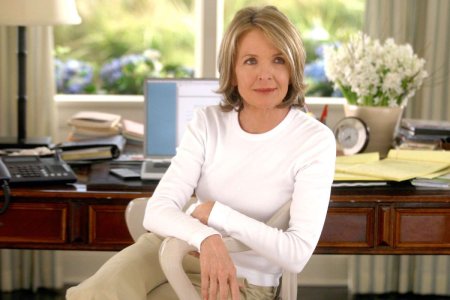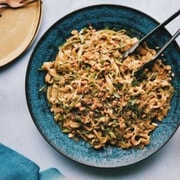Farewell to Diane Keaton: Beloved star of Father of the Bride and The First Wives Club, dies at 79
- Replies 0
Hollywood has lost one of its brightest, quirkiest, and most beloved stars. Diane Keaton, the Oscar-winning actress whose singular style and unforgettable performances made her a household name for over five decades, has died at the age of 79.
For more than five decades, she redefined what it meant to be a leading lady—bold, funny, and unapologetically herself.
Behind her signature hats and suits was a woman whose story was as layered and fascinating as the roles she played.
Born Diane Hall in Los Angeles in 1946, Keaton was the eldest of four children in a family that balanced the practical (her father was a civil engineer) with the artistic (her mother, a homemaker with dreams of the stage, was her first advocate and inspiration).
Keaton’s early years were marked by a love of performance—she sang, she acted, and she dreamed big. After high school, she briefly attended college for drama, but the lure of New York’s theater scene proved irresistible.
She dropped out, moved east, and adopted her mother’s maiden name, Keaton, to avoid confusion with another Diane Hall in the actors’ union.
Keaton’s first big break came as an understudy in the original Broadway production of Hair in 1968. But behind the scenes, she struggled with bulimia, a battle she later spoke about with characteristic candor.
“I became a master at hiding,” she once said, describing the isolation and secrecy of her illness.
Therapy eventually helped her recover, but the experience left a lasting mark on her perspective and her art.
In 1970, she made her film debut in Lovers and Other Strangers, but it was her role as Kay Adams in Francis Ford Coppola’s The Godfather (1972) that catapulted her to stardom.
Ironically, Keaton hadn’t read Mario Puzo’s novel before her audition and had little idea what she was getting into. “I just was going around auditioning. I think that was amazing for me,” she later recalled.
Her portrayal of Kay—vulnerable, conflicted, and ultimately steely—became one of the most memorable in film history, and she reprised the role in both sequels.
Keaton’s creative partnership with Woody Allen defined much of her early career. After starring in his Broadway play Play It Again, Sam (earning a Tony nomination), she appeared in a string of Allen’s films, including Sleeper, Love and Death, and, most famously, Annie Hall.
The 1977 romantic comedy not only won Keaton the Academy Award for Best Actress but also set a new standard for on-screen authenticity.
Annie’s offbeat wardrobe—vests, ties, slouchy trousers—was pure Keaton, and her natural, neurotic charm made her a style icon for generations.
Despite her success, Keaton was famously self-critical. “I just don’t like the way I look and sound,” she admitted in the 1970s, rarely watching her own films. Yet her vulnerability only endeared her more to audiences.
Also read: Celebrity Wheel of Fortune cancels two tapings—what really happened behind the scenes?
Keaton’s filmography reads like a greatest-hits list of modern cinema. She moved effortlessly between genres, starring in dramas like Looking for Mr. Goodbar and Reds (opposite Warren Beatty), thrillers like The Little Drummer Girl, and comedies like Baby Boom and The First Wives Club.
Her collaborations with director Nancy Meyers—Father of the Bride, Father of the Bride Part II, and Something’s Gotta Give—showcased her comedic timing and her ability to bring warmth and wit to every role.
Something’s Gotta Give even earned her another Oscar nomination, proving that leading ladies don’t have an expiration date.
Keaton’s later years were just as prolific. She voiced a character in Pixar’s Finding Dory, starred in the Book Club films, and even appeared in a Justin Bieber music video.
On television, she took a rare starring role in HBO’s The Young Pope, reminding us all that reinvention is always possible.
Keaton wasn’t content to stay in front of the camera. She directed the documentary Heaven, the feature film Hanging Up, and even an episode of Twin Peaks.
Off-screen, she was known for her wit, her love of architecture and photography, and her candid reflections on aging, fame, and family.
Famously, Keaton never married—a rarity among her Hollywood peers. “I’m really glad I didn’t get married. I’m an oddball,” she once said, embracing her independence with humor and grace.
She did, however, become a mother later in life, adopting her daughter Dexter in 1996 and her son Duke in 2001.
“Motherhood was not an urge I couldn’t resist, it was more like a thought I’d been thinking for a very long time. So I plunged in,” she told Ladies’ Home Journal.
Also read: From “Butch Cassidy” to Sundance—Hollywood icon Robert Redford dies at 89, leaving a legacy that shaped film and activism
Diane Keaton’s influence extends far beyond her filmography. She changed the way women could look, act, and age in Hollywood.
She was a muse, a mentor, and a trailblazer—never afraid to be vulnerable, never afraid to be herself.
Her Instagram feed, filled with self-deprecating humor and heartfelt tributes to friends and family, made her a favorite with younger generations, too.
She was also a loyal friend, maintaining close relationships with former co-stars and collaborators, and she never shied away from speaking her mind—even when it meant defending controversial figures or admitting her own flaws.
Read next:

Did Annie Hall inspire your wardrobe? Did you laugh (or cry) at her in Father of the Bride or The First Wives Club? Maybe you admired her for living life on her own terms, or for showing that it’s never too late to try something new.
For more than five decades, she redefined what it meant to be a leading lady—bold, funny, and unapologetically herself.
Behind her signature hats and suits was a woman whose story was as layered and fascinating as the roles she played.
Born Diane Hall in Los Angeles in 1946, Keaton was the eldest of four children in a family that balanced the practical (her father was a civil engineer) with the artistic (her mother, a homemaker with dreams of the stage, was her first advocate and inspiration).
Keaton’s early years were marked by a love of performance—she sang, she acted, and she dreamed big. After high school, she briefly attended college for drama, but the lure of New York’s theater scene proved irresistible.
She dropped out, moved east, and adopted her mother’s maiden name, Keaton, to avoid confusion with another Diane Hall in the actors’ union.
Keaton’s first big break came as an understudy in the original Broadway production of Hair in 1968. But behind the scenes, she struggled with bulimia, a battle she later spoke about with characteristic candor.
“I became a master at hiding,” she once said, describing the isolation and secrecy of her illness.
Therapy eventually helped her recover, but the experience left a lasting mark on her perspective and her art.
In 1970, she made her film debut in Lovers and Other Strangers, but it was her role as Kay Adams in Francis Ford Coppola’s The Godfather (1972) that catapulted her to stardom.
Ironically, Keaton hadn’t read Mario Puzo’s novel before her audition and had little idea what she was getting into. “I just was going around auditioning. I think that was amazing for me,” she later recalled.
Her portrayal of Kay—vulnerable, conflicted, and ultimately steely—became one of the most memorable in film history, and she reprised the role in both sequels.
Keaton’s creative partnership with Woody Allen defined much of her early career. After starring in his Broadway play Play It Again, Sam (earning a Tony nomination), she appeared in a string of Allen’s films, including Sleeper, Love and Death, and, most famously, Annie Hall.
The 1977 romantic comedy not only won Keaton the Academy Award for Best Actress but also set a new standard for on-screen authenticity.
Annie’s offbeat wardrobe—vests, ties, slouchy trousers—was pure Keaton, and her natural, neurotic charm made her a style icon for generations.
Despite her success, Keaton was famously self-critical. “I just don’t like the way I look and sound,” she admitted in the 1970s, rarely watching her own films. Yet her vulnerability only endeared her more to audiences.
Also read: Celebrity Wheel of Fortune cancels two tapings—what really happened behind the scenes?
Keaton’s filmography reads like a greatest-hits list of modern cinema. She moved effortlessly between genres, starring in dramas like Looking for Mr. Goodbar and Reds (opposite Warren Beatty), thrillers like The Little Drummer Girl, and comedies like Baby Boom and The First Wives Club.
Her collaborations with director Nancy Meyers—Father of the Bride, Father of the Bride Part II, and Something’s Gotta Give—showcased her comedic timing and her ability to bring warmth and wit to every role.
Something’s Gotta Give even earned her another Oscar nomination, proving that leading ladies don’t have an expiration date.
Keaton’s later years were just as prolific. She voiced a character in Pixar’s Finding Dory, starred in the Book Club films, and even appeared in a Justin Bieber music video.
On television, she took a rare starring role in HBO’s The Young Pope, reminding us all that reinvention is always possible.
Keaton wasn’t content to stay in front of the camera. She directed the documentary Heaven, the feature film Hanging Up, and even an episode of Twin Peaks.
Off-screen, she was known for her wit, her love of architecture and photography, and her candid reflections on aging, fame, and family.
Famously, Keaton never married—a rarity among her Hollywood peers. “I’m really glad I didn’t get married. I’m an oddball,” she once said, embracing her independence with humor and grace.
She did, however, become a mother later in life, adopting her daughter Dexter in 1996 and her son Duke in 2001.
“Motherhood was not an urge I couldn’t resist, it was more like a thought I’d been thinking for a very long time. So I plunged in,” she told Ladies’ Home Journal.
Also read: From “Butch Cassidy” to Sundance—Hollywood icon Robert Redford dies at 89, leaving a legacy that shaped film and activism
Diane Keaton’s influence extends far beyond her filmography. She changed the way women could look, act, and age in Hollywood.
She was a muse, a mentor, and a trailblazer—never afraid to be vulnerable, never afraid to be herself.
Her Instagram feed, filled with self-deprecating humor and heartfelt tributes to friends and family, made her a favorite with younger generations, too.
She was also a loyal friend, maintaining close relationships with former co-stars and collaborators, and she never shied away from speaking her mind—even when it meant defending controversial figures or admitting her own flaws.
Read next:
- October's finest: Must-watch TV dramas that prove fall is peak television season
- Dolly Parton clears the air—what she says about her health after recent rumors
Key Takeaways
- Iconic actress Diane Keaton has died in California at the age of 79, with her family requesting privacy during this sad time.
- Keaton was best known for her roles in films such as Annie Hall (for which she won an Oscar), The Godfather trilogy, Father of the Bride, and The First Wives Club.
- Over her long career, Keaton was also admired for her unique style, collaborations with directors like Woody Allen and Nancy Meyers, and her openness about personal struggles, including bulimia.
- She never married but adopted two children, Dexter and Duke, both of whom survive her.







